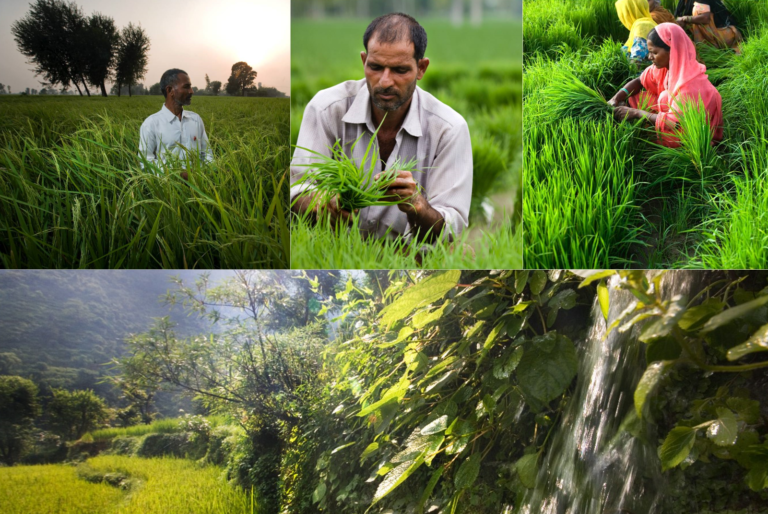Project Description
Rice contributes about 10.1% of agricultural greenhouse gas (GHG) emission globally. Methane (CH4) from flooded rice is the major GHG, while nitrous oxide (N2O) provides the second highest contribution to GHGs from rice based cropping systems. When a rice field is flooded, anaerobic conditions favour CH4 emissions, meaning that 8% of global anthropogenic CH4 emissions come from flooded rice fields1. However, rice also presents a great opportunity to reduce GHG emissions by management of the conditions of flooding. Alternate wetting and drying (AWD), if implemented correctly, can reduce CH4 emissions by up to 97% without any penalties in yield with a saving in water of almost 40%; N2O emissions may be increased, but these can be minimised with careful fertilizer management. Even though AWD has been identified to have great potential to reduce GHG emissions, it has not been widely used as rice is traditionally grown mainly under flooded conditions. In addition, if not implemented correctly AWD can reduce yield. However, with good management, there are great potential benefits to farmers in reducing the need for water, so reducing costs of electricity for pumping water and reducing depletion of the ground water, which is a widespread problem in the Northern states of India2.
Tilda rice works with suppliers from all over the world, but their major suppliers are in Northern India and Pakistan. Tilda aims to grow their rice as sustainably as possible. Therefore, they have been trying to encourage their farmers to implement AWD to measure the impact of AWD on grain quality and water saving. They are keen to understand the impact of AWD on GHG emissions, how to manage AWD to reduce overall GHG emissions and provide better livelihood to their suppliers. In addition, AWD can reduce accumulation in arsenic in rice by 41-68% compared to rice grown with continuous flooding (CF)3.
The objectives of the proposed work are therefore to
- Measure GHG emissions and other associated parameters from CF and AWD rice fields in the Tilda supplier chain in Northern India.
- Estimate water saving, financial benefits and grain arsenic and cadmium content in both CF and AWD fields.
- Use process-based models to simulate and project emissions associated with AWD so that Tilda can estimate the global benefits of AWD to farmers and the environment.
CANDIDATE BACKGROUND
Essential: Degree in a natural science subject – equivalent to a 2.1 at honours level or above
Desirable: Ability in numerical analysis; experience in field research
Image: Copyright Tilda. All rights reserved.
Supervisors
Primary Supervisor: |
University of Aberdeen, School of Biological Sciences Email: d.nayak@abdn.ac.uk |
Paul N. WilliamsSecondary Supervisor: | Profile: Paul N. Williams Email: p.williams@qub.ac.uk Institution: Queen's University, Belfast Department/School: School of Biological Sciences |
Jo SmithAdditional Supervisor: | Profile: Jo Smith Email: jo.smith@abdn.ac.uk Institution: University of Aberdeen Department/School: School of Biological Sciences |
Additional Supervisor: | Dr Arindam Datta, The Energy and Resources Institute (TERI), India Email: arindam.datta@teri.res.in |
References
- United Nations Environment Programme and Climate and Clean Air Coalition (2021). Global Methane Assessment: Benefits and Costs of Mitigating Methane Emissions. Nairobi: United Nations Environment Programme.
- https://www.thethirdpole.net/en/food/fears-for-farming-groundwater-plummets-northern-india/
- Li, C., Carrijo, D.R., Nakayama, Y., Linquist, B.A., Green, P.G., Parikh, S.J., 2019. Impact of Alternate Wetting and Drying Irrigation on Arsenic Uptake and Speciation in Flooded Rice Systems. Agriculture, Ecosystems & Environment 272, 188–198. https://doi.org/10.1016/j.agee.2018.11.009
QUADRAT Themes
- environmental-management
Partners
CASE Partnership with Tilda Rice Ltd
A CASE Partnership project is delivered in collaboration with an industry partner. The CASE partner organisation contributes finance, expertise, facilities and an internship.






















































